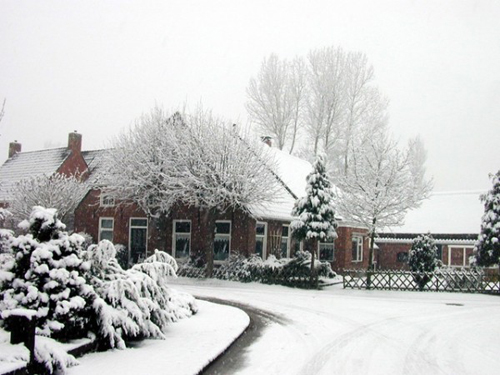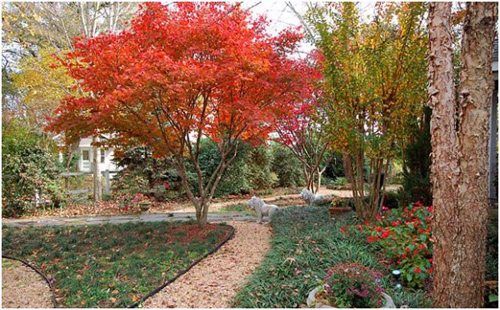How to Care for your Lawn and Landscaping Before Winter
When the fall sets in, the cooler temperatures and the obsession about your lawn tends to go away, right? The reality is, you still have care and maintenance chores to do for your yard in order for it to come up green in the spring. To prevent winter and cold damage follow these tips to help you prepare your lawn and landscaping before the cold sets in. After all, you wouldn’t want your hard work from this year to be repeated again next spring, would you?

* Continue watering: One misconception during winter about grass is that is stops growing, dies, and doesn’t need watering until spring. This couldn’t be further from the truth. If you live in a climate where it snows, the melting snow will be sufficient to keep water levels in the grass. While if you live in a warmer climate, you can cut back on watering your lawn but not stop. The grass becomes dormant and doesn’t have a quick growth output in the winter, but it still needs moisture.
* Fertilize and feed: Your grass and landscaping plants should be given fertilizer before the winter sets in. Visit your local home improvement center or garden center to learn what products are good for your climate and region. Plants need food to feed on throughout the winter season, and fertilizer will help make the grass roots stronger for the following season. Do this during the fall before the first snow fall.

* Grass should be mowed until it slows in growing: The length of your grass is vital in keeping it healthy during its dormant stage. If the grass is too short the cold wind can reach the roots and cause dead sections later in the season. If the grass is too long, the blades can get mold or disease. Stop cutting grass after you notice it stop growing and leave it for a few weeks. This should ensure a good length.
* Rake leaves and debris regularly: Grass still needs access to sunlight during the winter months. Rake up leaves and debris throughout the season to ensure grass receives ample light and air. Mold, and disease, is common in winter months when leaves and debris are left over grass. Do not leave trash bags, trash cans or other heavy items on grass for long periods of time as well.

* Prune trees and shrubbery: Depending on your climate, shrubs, and trees should be pruned before the winter season. Visit your garden & home improvement store for tips for pruning times and how far to cut limbs. Flowering plants and trees have different pruning schedules and should be researched before you start cutting.
* Aerate and de-weed your lawn: Placing holes in your yard and pulling out soil is called aeration. This helps fertilizer; water and air get deep into the grass. Consider aerating your lawn before the winter season sets in. Consider removing weeds and foreign plants before the winter sets in. Spray weed killer before the winter sets in. This will ensure when spring comes weeds from the fall will not affect your new lawn.

Your yard and landscaping will come back better and fresher in the spring with fall maintenance now. With preventative maintenance, your lawn will be shielded from disease and harmful cold as the winter months set in. Consider mulching plant beds and landscaping areas to give an extra barrier against cold and harsh winter winds. Together with your garden center you can prepare your lawn and landscaping for the upcoming winter months.
Freshome reader’s what fall rituals do you routinely do to keep your lawn fresh for the spring? We’d love to hear your gardening tips!
olga
Latest posts by olga (see all)
- Floating Sofa Collection by Karim Rashid - May 27, 2012
- DIY Wall Decor - May 27, 2012
- Tambour Table: To Keep Everything In Order - May 25, 2012
Leave a Reply



 Color
Color Design Style
Design Style Small Space
Small Space Useful Tips
Useful Tips

